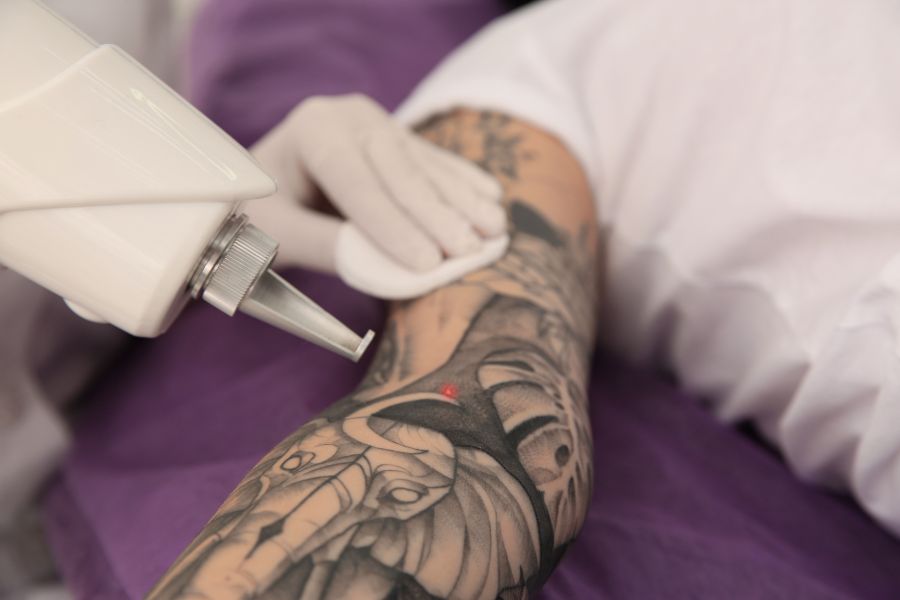The most effective method of tattoo removal is laser tattoo removal. This method uses high-intensity laser light to break up the tattoo ink into tiny particles, which are absorbed and eliminated by the body's immune system.
Laser tattoo removal is considered the gold standard because it is highly effective and can target a wide range of tattoo colours. It is also less invasive than other methods, such as surgical excision, which involves cutting out the tattooed skin.
The laser tattoo removal process usually requires several sessions spaced weeks apart, as the body needs time to absorb the broken-down ink particles between sessions. The amount of treatments required depends on the colour, size, and age of the Tattoo, the patient's skin type and overall health.
Laser Tattoo Removal with Pico Lasers
We are using Pico laser devices, a newer type of laser technology for tattoo removal. They use short pulses of energy to break down tattoo ink particles into smaller particles than traditional Q-switched lasers, making removing them easier for the body's immune system.
Pico laser technology is considered more effective and efficient than traditional Q-switched lasers, as it can remove tattoos in fewer sessions and with less damage to the surrounding skin. Additionally, pico lasers are effective on a broader range of ink colours, including stubborn colours like green and blue.
Several brands of Pico laser machines are available on the market, and Pulse Light clinic has PicoSure & PicoWay, ensuring they can treat different tattoos and skin types.

Can the Tattoo be removed completely?
While laser tattoo removal can be costly and may cause discomfort during the treatment, it is generally considered safe and has a high success rate. However, it is noteworthy to mention that not all tattoos can be removed entirely, and some may only be lightened rather than fully eliminated.
While laser tattoo removal is considered the most effective method of removing tattoos, some types of tattoos may be more difficult or impossible to remove altogether. These include:
- Amateur tattoos: Tattoos that are done by an inexperienced artist or at home with non-sterile equipment can be more challenging to remove because the ink may be applied too deeply or unevenly.
- Tattoos with specific colours: Some tattoo colours, mainly pastel, light, or fluorescent, are more difficult to remove because they absorb different wavelengths of laser light.
- Tattoos on specific body parts: Tattoos located on areas with poor blood flow, such as the fingers, toes, or ears, may be more complicated to remove because the immune system may have a harder time flushing out the broken-down ink particles.
- Very old tattoos: Tattoos several decades old may be more difficult to remove because the ink may have spread and faded over time, making it more difficult for the laser to target.
- Cover-up tattoos: Tattoos that have been covered up with new ink may be more challenging to remove because the layers of ink can make it harder for the laser to penetrate and break down the original ink.
While some tattoos may be trickier to remove than others, consulting with a qualified and experienced laser tattoo removal specialist is essential to decide the most suitable treatment for your Tattoo. They can assess your Tattoo and provide a realistic expectation of the results that can be achieved through laser tattoo removal.